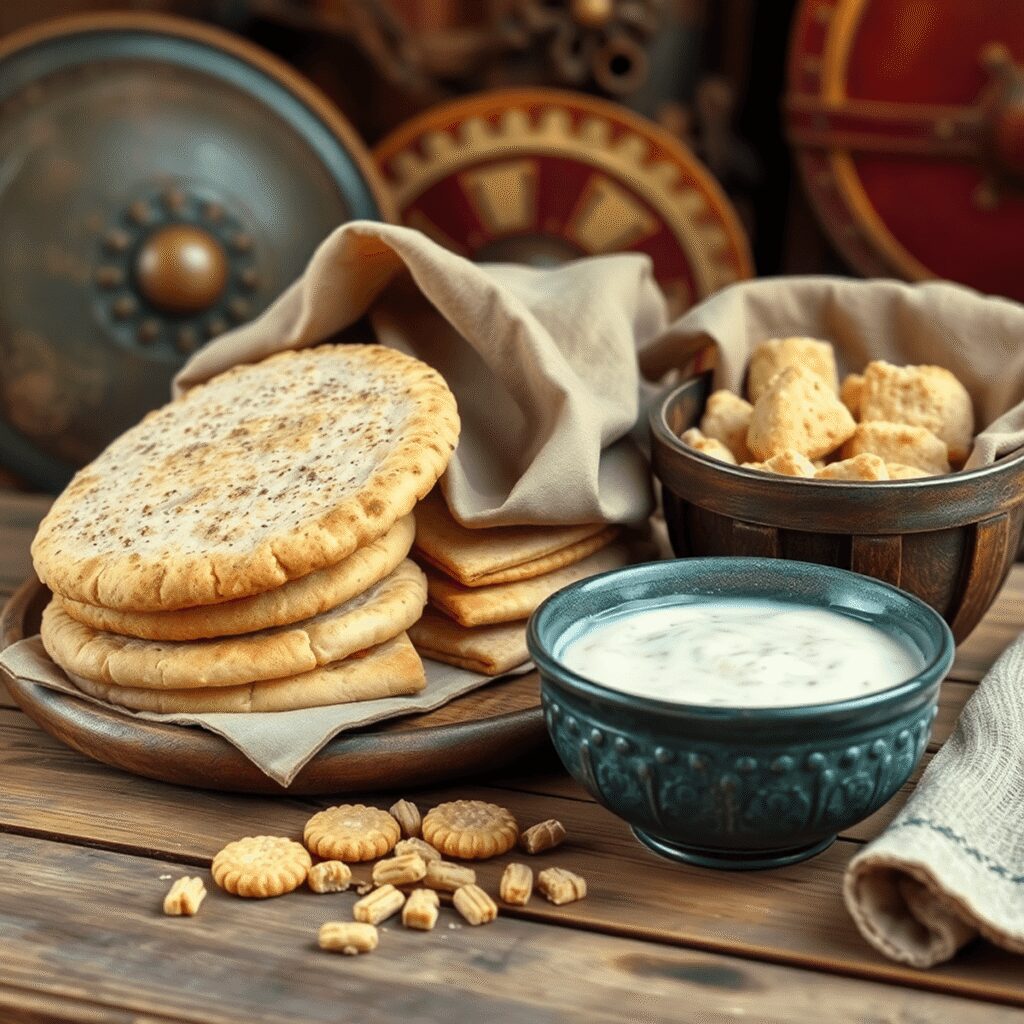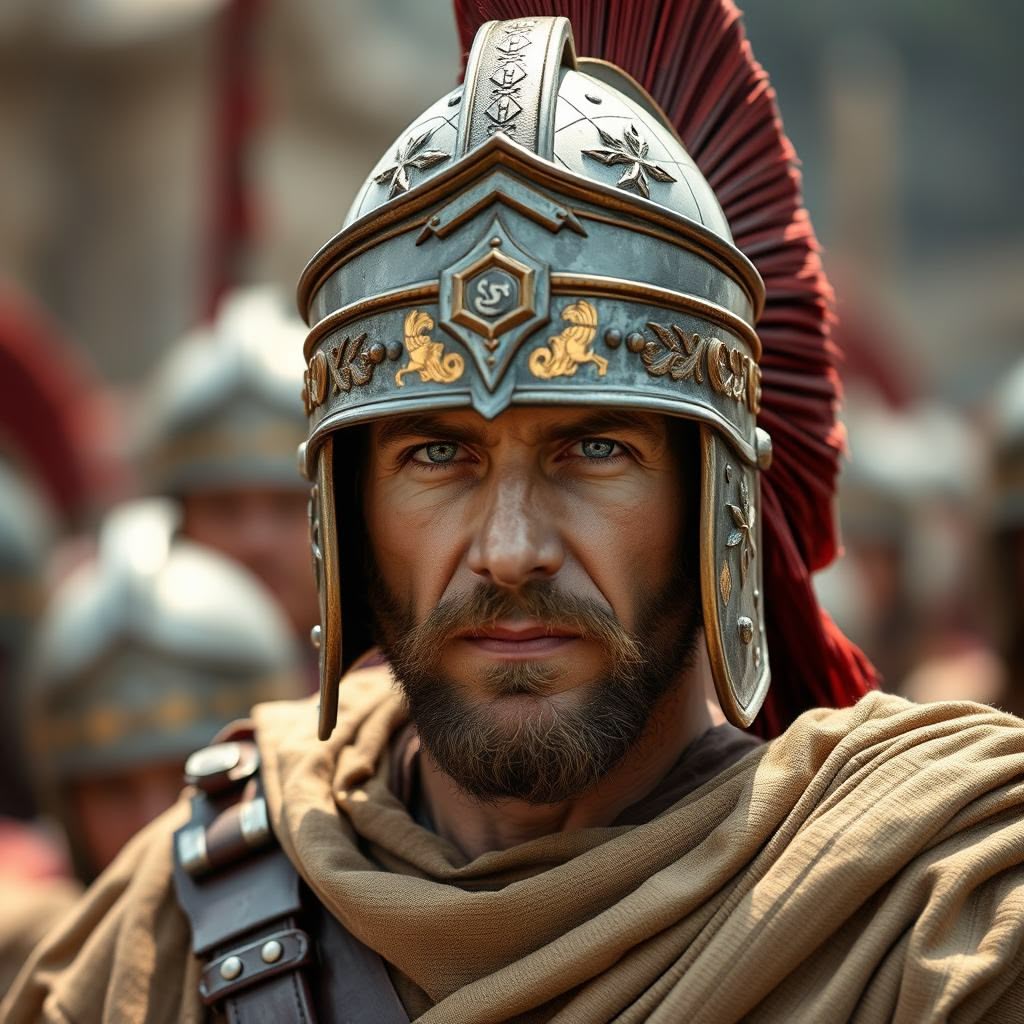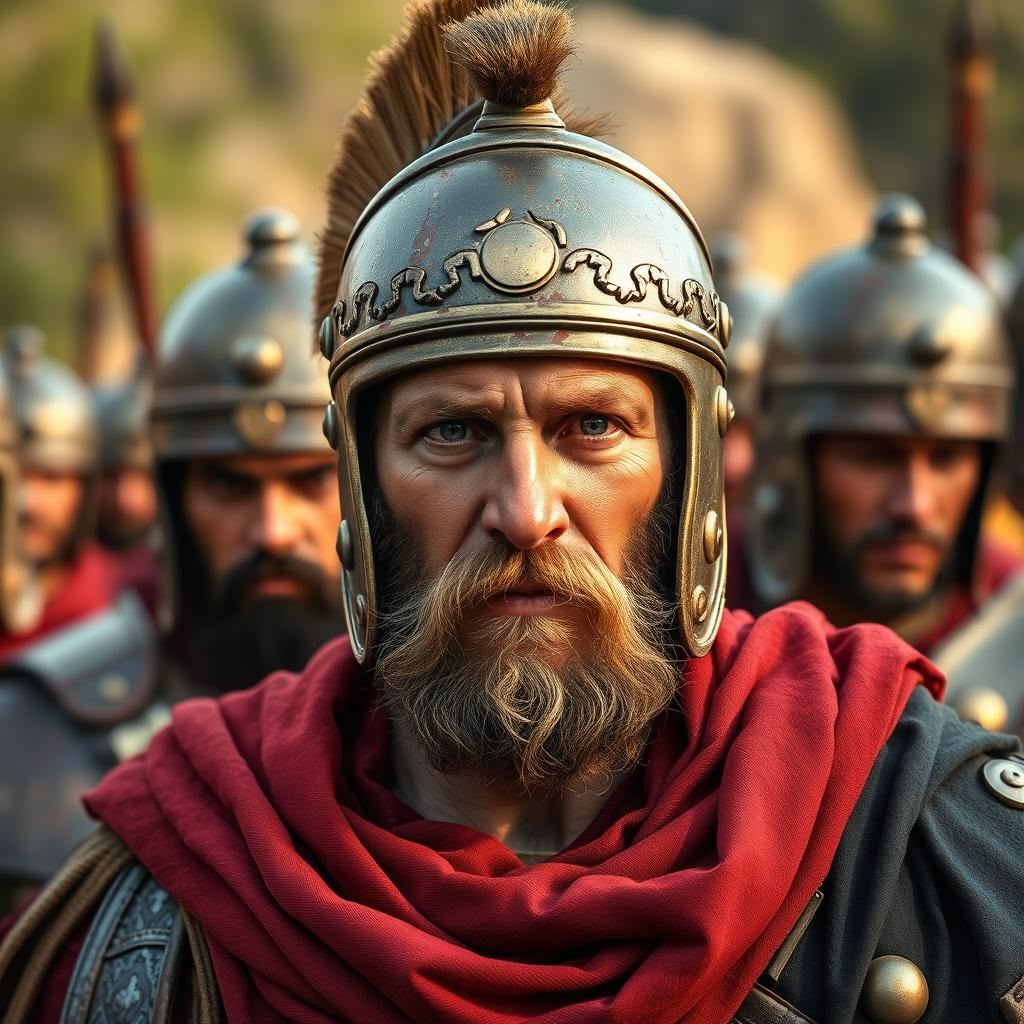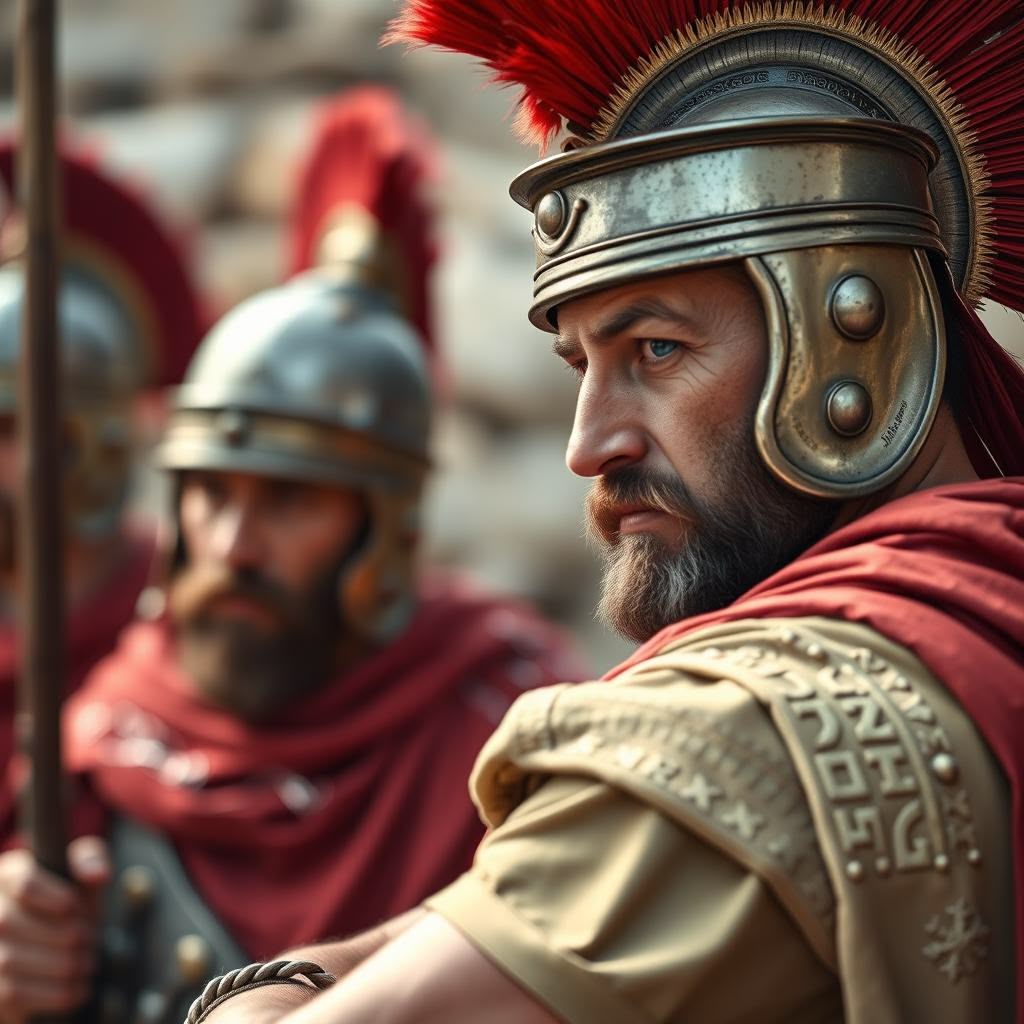The Roman legionary diet played a crucial role in sustaining one of history’s most formidable military forces. Ancient Roman soldiers required a reliable, energy-rich diet to endure long campaigns, grueling marches, and intense combat. The nutritional strategies behind their daily rations reflect not only the physical demands placed on these men but also the impressive logistical systems maintained by the Roman army.
Understanding the Roman legionary diet offers valuable insights into:
- The physical prowess of ancient Roman soldiers
- The challenges of feeding thousands across vast territories
- How simple, durable foods supported sustained endurance
The diet was carefully designed to balance energy needs with practicality—fueling soldiers who helped build and defend an empire that shaped Western civilization. This exploration uncovers what truly powered these warriors and how nutrition contributed to their legendary effectiveness on the battlefield.

The Staples of the Roman Legionary Diet
The foundation of a Roman legionary’s diet rested firmly on wheat-based foods, which provided the energy and durability required for life on campaign. Three primary staples stood out:
- Puls: A simple wheat mash made by boiling wheat grains or flour into a porridge-like consistency. Puls was nourishing, easy to prepare, and highly digestible, making it ideal for sustaining soldiers during long marches.
- Panem: Flatbread baked from wheat flour, water, and sometimes salt. Panem served as a versatile source of carbohydrates that could be eaten with various accompaniments or alone when other foods were scarce.
- Buccellatum: A hard biscuit crafted from wheat flour, salt, and water, baked twice to create a durable and long-lasting bread. Buccellatum was especially valuable because its extended shelf life allowed soldiers to carry it on extended campaigns without fear of spoilage.
Each legionary received daily grain rations averaging about 830 grams of unground wheat. The soldiers themselves milled this grain into flour using portable hand mills. This practice ensured freshness and allowed flexibility in meal preparation while reducing reliance on supply trains.
Wheat’s importance extended beyond nutrition; it was practical for military logistics. Its resilience in storage and transport, combined with high caloric density, made it an ideal fuel for the demanding physical exertions required by Roman soldiers. This cereal-based diet formed the backbone that enabled legionaries to maintain strength and endurance across vast distances and varying climates.
This reliance on wheat-based staples set the stage for additional nutritional sources that complemented energy needs with protein and fats essential for combat readiness. However, it’s important to note that daily life in Ancient Rome varied significantly across different social classes, which influenced not just dietary habits but also overall lifestyle. For instance, the social class divide in Rome meant that access to certain foods could be limited for lower classes compared to their wealthier counterparts.
Moreover, the successful transportation of these food supplies relied heavily on the extensive network of Roman roads, which played a crucial role in maintaining and expanding the empire. These roads not only facilitated military movements but also ensured effective governance and cultural exchange across vast regions.
In addition to their logistical advantages, these roads were a testament to the remarkable engineering feats achieved by the Romans. Their engineering techniques have had a lasting impact on future generations, serving as a foundation for contemporary infrastructure systems.
Lastly, while discussing Roman society and its complexities, one cannot overlook the significant legal status of Roman women. This legal framework surrounding women reflected a complex interplay of rights and restrictions that significantly influenced gender dynamics in ancient Rome.

Protein Power: Meat, Legumes, and Dairy in the Legionary Diet
Protein was a crucial element in the Roman legionary diet, supporting muscle repair and sustained energy for soldiers engaged in intense physical exertion. The sources of protein varied depending on availability, geography, and logistical constraints.
1. Meat: The Preferred Source of Protein
Meat preferences leaned heavily toward pork, valued for its high-fat content. This fat provided dense calories vital for endurance during long marches and combat. Soldiers consumed pork in several forms, including smoked bacon and fresh cuts. Mutton was also part of the diet but less favored due to lower fat levels. When opportunities arose, wild game supplemented the protein quota—animals hunted locally during campaigns added variety and nutrition but were not reliable staples.
2. Legumes: The Plant-Based Protein Solution
Legumes played a key role as plant-based protein sources, especially during times when meat was scarce or rationed. Lentils and beans were common legumes that legionaries ate regularly. These foods were prized for their shelf stability and nutritional density, making them ideal for long campaigns where fresh meat was not always accessible. Legumes also provided essential fiber and micronutrients that balanced the largely grain-based diet.
3. Dairy: The Complementary Protein Source
Dairy products complemented protein intake, particularly cheese made from sheep or goat milk. This cheese was durable enough to travel with troops across vast distances without spoiling quickly. It offered concentrated protein and fats while adding flavor variety to otherwise monotonous meals.
The combination of pork, mutton, wild game, legumes like lentils and beans, along with dairy products such as cheese ensured Roman soldiers received adequate protein despite varying supply conditions. This dietary strategy balanced nutritional needs with practical considerations of preservation and transport, enabling sustained physical performance in diverse environments.
The dietary habits of these soldiers can provide insight into the lives of plebeians, who represented the majority of the population in ancient Rome. These common people played a vital role in the fabric of Roman society and significantly influenced the development of political and economic structures.
Moreover, understanding the dietary practices within the context of the birth of the Roman Republic enriches our comprehension of this pivotal period in history. The transition from monarchical rule to a republican system marked a significant shift in governance that has enduring impacts on modern political structures.
In addition to these historical insights, it’s fascinating to see how modern technology allows us to immerse ourselves into past cultures through platforms like Second Life. As an example, JP Farmer, an academic who enjoys role-playing games set in ancient Rome, utilizes such platforms to explore historical narratives in an interactive manner.
Lastly, exploring the art and culture of ancient Rome reveals another layer of understanding about this remarkable civilization that thrived from 753 BC to 476 AD. The artistic expressions from this era were heavily influenced by earlier Greek and Etruscan traditions.

Fats, Flavorings, and Hydration: The Role of Olive Oil, Salt, and Beverages in Sustaining Legionaries
The diet of Roman legionaries was heavily dependent on ingredients that could both enhance the taste and nutritional value of their basic food supplies.
The Importance of Olive Oil
Olive oil, despite being a non-native product to many parts of the empire, was imported from regions like Italy and Hispania. This oil was indispensable—not only used for cooking but also as a dressing to improve the taste of otherwise plain foods such as bread and legumes. The high caloric density of olive oil made it a valuable source of fats, providing sustained energy essential for soldiers enduring long marches and battles.
The Role of Salt
Salt played a crucial role beyond taste enhancement. It served as a key preservative for meats and other perishable supplies, extending their shelf life during extended campaigns. The importance of salt is captured in the origin of the word salarium, referring to the allowance or pay given to soldiers specifically for purchasing salt. This connection highlights how indispensable salt was to military logistics and daily sustenance.
Hydration through Beverages
Beverages contributed significantly to hydration and morale. While water was always available, legionaries consumed diluted wine to maintain fluid levels while limiting alcohol intake. Posca—a mixture made from vinegar, water, and herbs—offered refreshment with antibacterial properties that helped prevent dehydration and illness in harsh conditions.
These elements—olive oil importation, salt preservation, and beverage choices—formed an essential framework supporting the Roman soldier’s endurance and efficiency on campaign. Such insights into the Roman lifestyle not only highlight their dietary habits but also reflect on their broader cultural practices. Furthermore, these dietary components were often integrated into their architectural endeavors, as seen in various masterpieces of Roman architecture, which were designed to support their unique lifestyle needs.

Beverages Consumed by Legionaries: From Diluted Wine to Regional Brews
Roman legionaries relied on specific beverages that balanced hydration needs with practical considerations during long campaigns. Diluted wine was the staple drink. Soldiers mixed wine with water to reduce alcohol content, ensuring hydration without impairing alertness or stamina. This practice was important in maintaining discipline and readiness in harsh conditions.
Another widely consumed beverage was posca, a mixture of vinegar, water, and herbs such as pennyroyal or mint. Posca served multiple purposes:
- Provided refreshment and a tangy flavor that helped mask the taste of less palatable water sources
- Acted as a mild antiseptic, reducing the risk of waterborne illnesses
- Helped combat dehydration due to its acidic nature stimulating thirst
Posca was especially popular among lower-ranked soldiers and was common in urban areas beyond the military. Its simplicity and health benefits made it an ideal choice for sustaining troops on the move.
In certain regions like Gaul and Germania, beer also found its place within legionary consumption habits. While not as widespread as wine or posca, beer reflected local customs and available resources.
These beverage choices demonstrate how Roman military logistics adapted to maintain soldier well-being while addressing challenges related to climate, local water quality, and supply availability.
Feeding an Army: Food Distribution Systems and Meal Preparation Methods in Roman Camps
The food distribution system within Roman military camps was highly organized, reflecting the empire’s attention to maintaining soldier readiness through reliable nutrition. A key figure in this process was the tribune, a senior officer responsible for overseeing daily ration allocations. His role ensured that each legionary received a fair share, preventing shortages and disputes that could undermine morale.
Rations were typically distributed on fixed days, with soldiers receiving ingredients such as grain, salted meat, and legumes. The grain often came unground, requiring legionaries to mill it themselves using portable hand mills. This hands-on approach allowed soldiers to prepare fresh staples like puls (wheat mash) or panem (flatbread) according to their needs.
Roman camps lacked communal kitchens or mess halls common in modern armies. Instead, meal preparation was a largely individual or small-group activity. Soldiers cooked their food using basic utensils over open fires or simple hearths near their tents. This setup encouraged flexibility in meal choices and adaptation to available local resources gathered during campaigns.
Supplementing issued rations, soldiers frequently foraged or purchased additional ingredients from nearby settlements when possible. This practice helped diversify their diet beyond standard provisions and eased supply chain burdens during lengthy operations.
- Tribunes ensured equitable ration distribution
- Soldiers received unprocessed grains requiring personal milling
- No centralized cooking facilities; meals prepared individually or in small groups
- Local sourcing of supplementary food common during campaigns
This system balanced strict military discipline with practical adaptability, sustaining legionaries through diverse and challenging environments.
The Nutritional Strategy Behind the Legionary Diet: Balancing Energy Needs with Logistical Practicality
The Roman legionary diet was designed to meet the high-calorie needs of soldiers engaged in constant physical activity. Long marches, combat, and camp duties required a steady supply of energy. This necessity shaped a diet that focused on simple, calorie-dense foods capable of sustaining endurance without compromising practicality.
Key Elements of the Nutritional Strategy
The nutritional strategy behind the legionary diet included several key elements:
- Wheat-based staples such as puls, panem, and buccellatum provided a reliable source of carbohydrates. These foods were not only energy-rich but also resistant to spoilage, essential for long campaigns where fresh food was scarce.
- Pork, favored for its high fat content, delivered concentrated calories and essential nutrients needed for recovery after exertion.
- Legumes and cheese supplemented protein intake to support muscle maintenance and repair.
- Olive oil, despite being imported from distant regions, added both calories and flavor while facilitating the absorption of fat-soluble vitamins.
The composition of the legionary diet reflected a balance between nutritional density and logistical feasibility. Foods were selected for their shelf life and ease of transport rather than culinary variety. This approach ensured soldiers had access to sufficient fuel without burdening supply lines.
Stability Under Varying Conditions
Stability under varying conditions mattered greatly in the effectiveness of the legionary diet. The twice-baked buccellatum resisted mold and spoilage; dried legumes remained edible over weeks; salted pork could last longer than fresh meat. These factors minimized waste and guaranteed consistent nourishment.
Interestingly, the same principles of high-calorie, practical diets applied to other sectors of Roman society, including the gladiators. These warriors, often seen as heroes in Roman entertainment, also relied on specific dietary plans to maintain their physical prowess. Such insights into their nutritional strategies can be explored further in this article about The Gladiators: Heroes or Victims of Roman Entertainment?.
The emphasis on straightforward meals rich in calories illustrates how the Roman military combined practical logistics with an understanding of human energy requirements. Such foresight contributed heavily to the sustained effectiveness described in The Roman Legionary Diet: What Fueled an Ancient Superpower’s Soldiers?
Conclusion
The Roman Legionary Diet: What Fueled an Ancient Superpower’s Soldiers? reveals key factors behind the Roman military success. The diet was more than just food; it was a strategic tool that enabled soldiers to endure grueling marches, battles, and long campaigns. The combination of durable, energy-rich foods with efficient distribution systems showcased the Roman Empire’s logistical expertise.
- The simplicity and practicality of the diet ensured soldiers remained physically capable without compromising mobility.
- Nutritional choices reflected a balance between available resources and the demands of war.
- Salt, olive oil, grains, and protein sources worked together to maintain health and morale.
This ancient approach to feeding large groups has influenced modern military and mass-feeding strategies. The Roman legionaries’ diet teaches us that careful planning and adaptable nutrition are crucial for sustaining any large, active population under challenging conditions.
Moreover, the influence of Rome extends beyond military strategies. Agriculture played a vital role in Roman economic growth, supporting not only the diet of soldiers but also fueling the vast empire’s expansion. This aspect of Roman life underscores how intertwined their agricultural practices were with their military success.
Additionally, the spectacle of ancient Rome, which included gladiatorial games and chariot races, was not merely entertainment. It reflected the social relationships and political authority of the time, further demonstrating how multifaceted Roman society was.
The legacy of Ancient Rome continues to shape Western civilization today. From governance to cultural norms, Roman influence is both profound and enduring. For those interested in delving deeper into this fascinating world, Men of Pompeii serves as an ultimate online resource dedicated to exploring various aspects of Ancient Rome from its origins as a Republic to its transformation into a mighty Empire.

